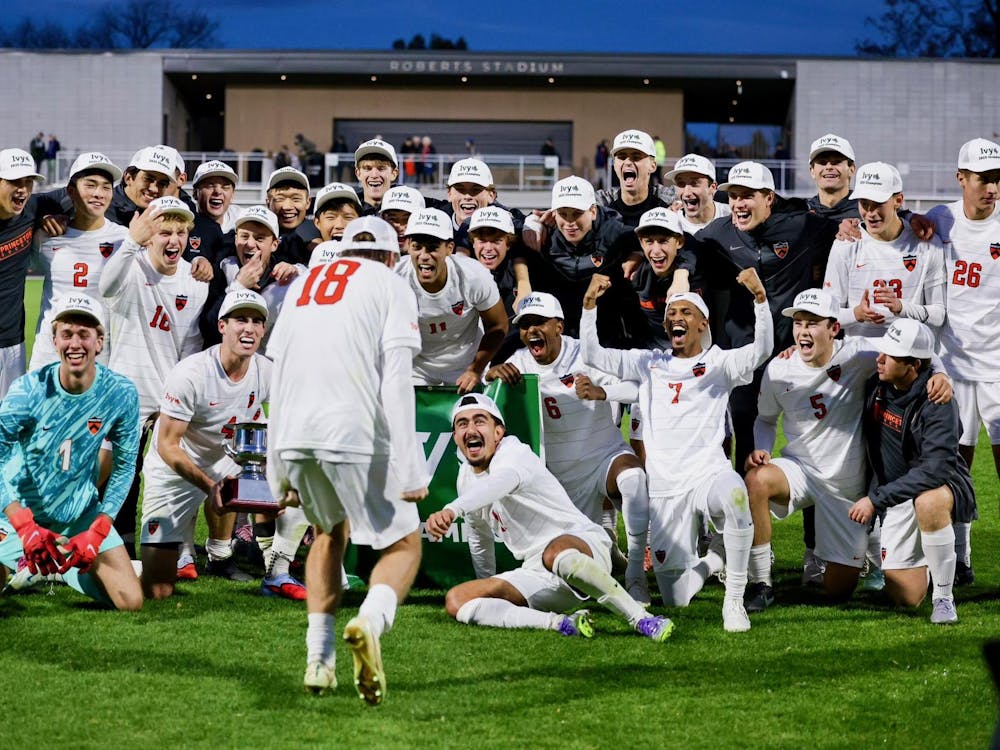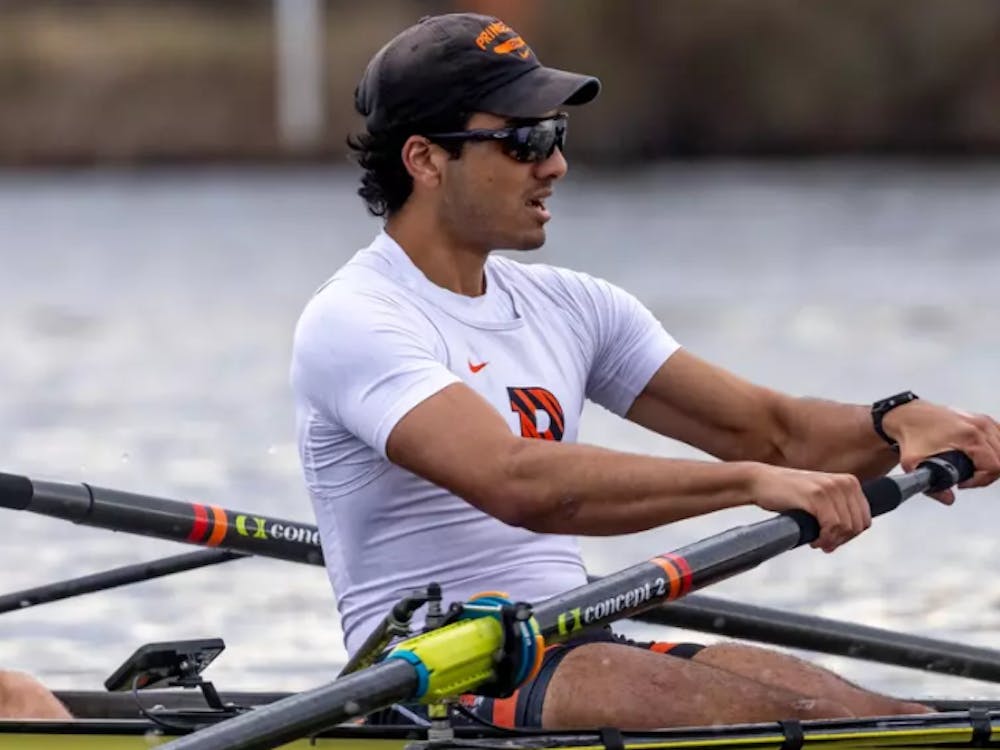Everything went according to plan — or so it seemed to those watching on the sideline. After the corner kick entered play during the men's soccer team's game against St. Joseph's on Sept. 17, sophomore midfielder Jason Adams knocked the ball to junior forward Kyle McHugh. McHugh then served it up to charging senior midfielder Jame Wunsch, who headed it deep into St. Joe's net after beating his defender on the far post.
Princeton's smoothly executed play, however, was not quite what head coach Jim Barlow '91 had in mind the night before.
"I joked with the guys [about] ... the play that Jame scored on. I had been up in the middle of the night thinking of restart plays and I thought given who we had on the field that that play had a chance at working," Barlow said. "It worked perfectly and Kyle got the shot, but he didn't hit the shot and he kind of shanked it, and Jame headed it in. It looked like it was drawn up that way, and it wasn't at all."
The kind of alertness and improvisation that Wunsch showed is often essential in finishing such set pieces.
In soccer, a set piece is any circumstance when the ball must reenter or restart play. One such example is the corner kick, the form of set piece on which Wunsch converted against St. Joseph's.
A corner is taken from the corner flag after the defending team strikes the ball over the endline. A second common restart is the free kick. A team takes a free kick when the opposing team commits a foul. Depending on where the foul is committed, the team takes either a direct service, where the ball is shot directly into the goal, or an indirect service, where the ball is struck by a player other than the one who is restarting play in order to count as a goal.
A penalty kick is a direct free kick taken when a defender commits a foul in the box. The fouled player then gets a free kick from the penalty spot, 12 yards from the goal, against only the goalie.
Throw-ins are taken when the ball is restarted after exiting the field over the sideline, and goal kicks are taken when the offense knocks the ball out over the endline.
Though a set piece's primary purpose is to reengage the ball, a service inbound or off a free kick often becomes much more than simply another kick.
Already this season, Princeton has scored several goals off set pieces. Don Betterton, the team's offensively minded assistant coach who is known as the "Shot Doctor," studied English Premiership teams and found that in the games from 2000 that he watched, 11 percent of goals were scored off corners and nine percent off other types of free kicks.
"With the amount of parity in college soccer right now and how organized and defensive so many teams are, a lot of teams feel like they can stay in any game if they're organized defensively and then capitalize on their restarts," Barlow said.
Princeton regularly tests new set piece plays and strategies in practice. Such game-speed practice is the only way to simulate the rapid decision-making process that players must utilize when a play doesn't happen as planned.

The Tigers have several players who can hit a strong service off restarts including McHugh, senior forward Zach Schwarz, sophomore midfielder Brian Brady and Wunsch. Princeton also welcomed freshman midfielder Devin Muntz this year, expecting him to be a valuable addition as a playmaker in set pieces.
"Devin's pretty good setting up people ... [he will] be the guy who moves the ball to the guy who's going to shoot," Barlow said.
Princeton continues to adapt and add new plays to its repertoire, borrowing ideas from other collegiate opponents as well as professional teams like the French national team — runner-up in this summer's World Cup — and Chelsea, an English Premiership favorite.
These professional teams' effectiveness in executing set piece plays has certainly rubbed off on Princeton so far this season. The team will look to hit more "perfectly mishit balls" like the one McHugh struck against St. Joseph's throughout the rest of this season.







